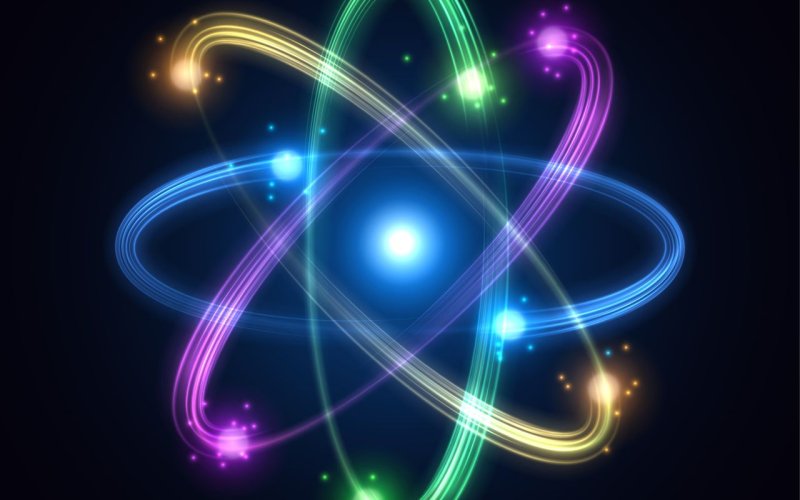All things around us have some colour or they are for instance, transparent. But what colour are the atoms from which it is all made? First of all, we will distinguish what the possibilities are for a thing to have colour.
The first possibility is that the thing (the Sun, a bulb, fire) emits light. In this case, the colour of light is determined by the material of the body and its temperature (so the Sun is yellow just because it consists of hydrogen and has a temperature of about 6,000 °C). Iron is orange during the casting just because it has a certain temperature and because it consists of iron. The second way bodies can get their colour is reflection and light absorption. The body that reflects light is for example, red because it reflects red but absorbs other colours. So if we shine blue or green on a red body, it will be black. Black bodies are those that absorb all colours (that’s why black heats up the most) and white bodies are those that reflect all colours. In both cases, therefore, it is mainly a property of the material of which the body consists of. And because every material is made up of atoms, there should be some connection between the colour of light and the atom. We know that an atom consists of a nucleus and electrons move around it. An electron is located at a certain place (state) in the atom, and if we supply it with energy, it can move to another place (state). It is not possible to use any amount of energy for this relocation, but specific values. And because light is energy, if we shine on the atom, for example, with white colour, the electrons of a given material will use, for example, the energy of blue light to jump to the next state.
The energy of red light is less than the required energy, but the energy of purple light is too high. So the given atom will only absorb blue light and it will seem yellow to us. If we heat the atom, we will supply the electrons with energy to jump to a higher state. However, it will not last there for long and jump back to the original state, while emitting light, which will again have a colour corresponding to the energy emitted by the electron. In the previous case, the atom would shine blue.
Because there are many states that an electron can jump into and different atoms have different numbers of electrons, the question cannot be answered unambiguously. Also, in the case of light emitted by the atom, we are not limited only to visible colours, but also to, for example, infrared or ultraviolet radiation.
Want to ask something?
Send us an e-mail with the subject “Physics mysteries” to the address:
We can't wait to tackle your interesting questions!





